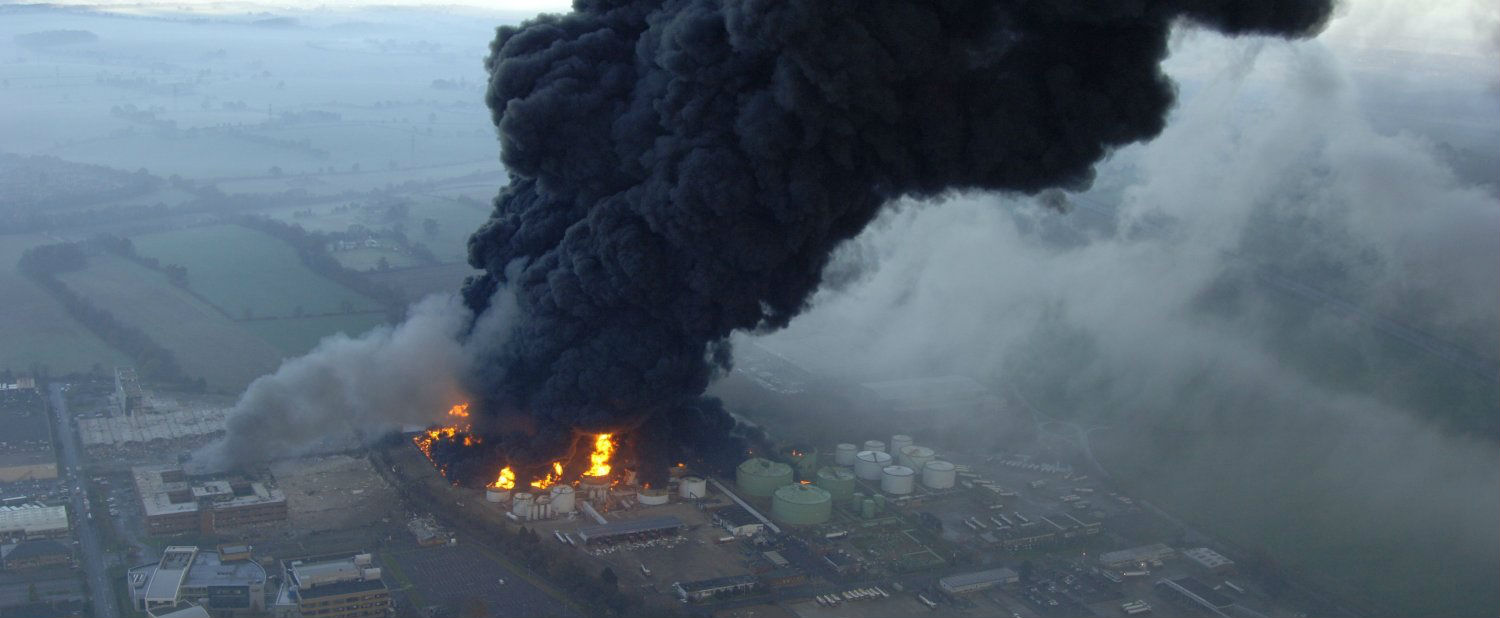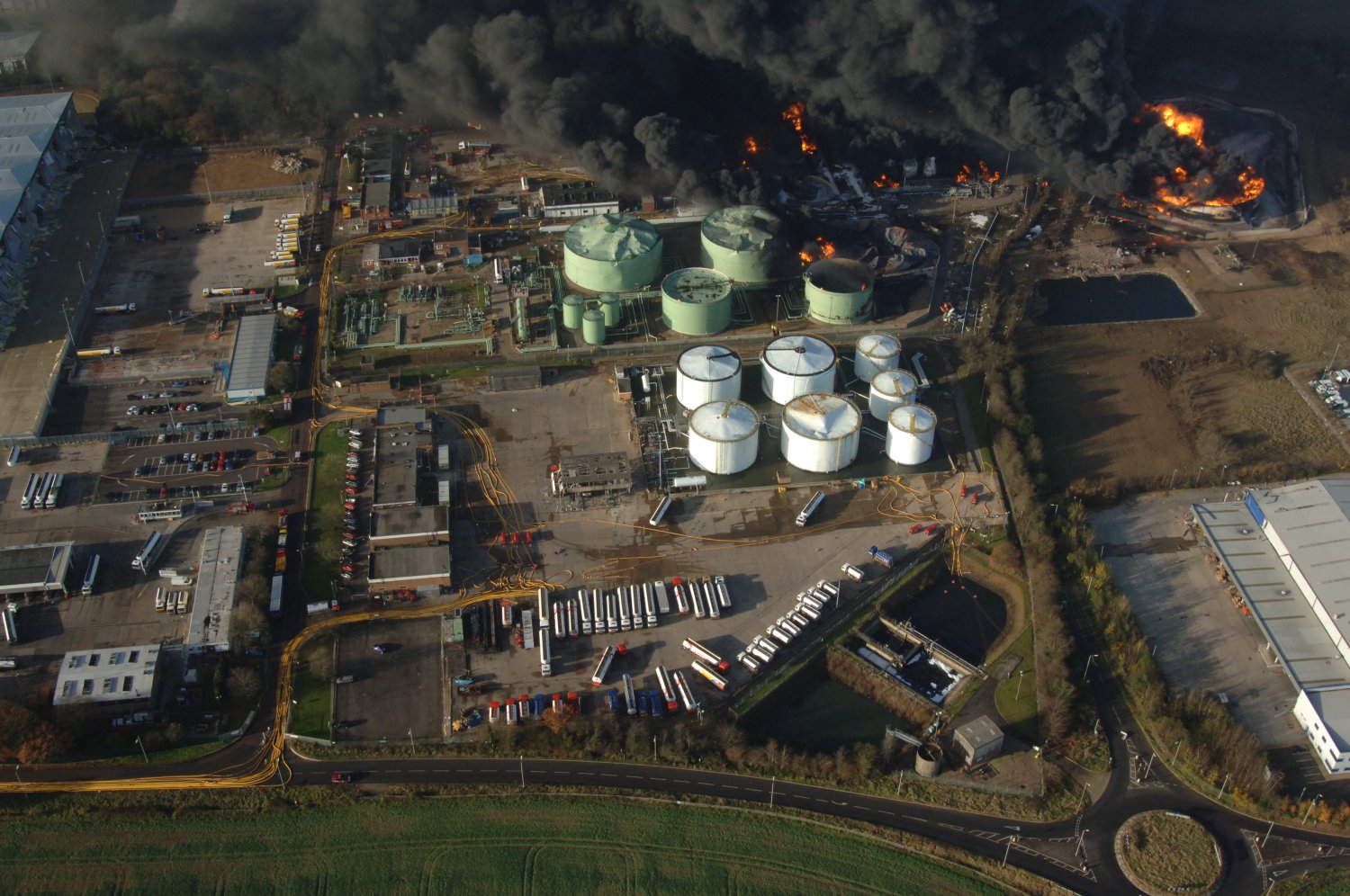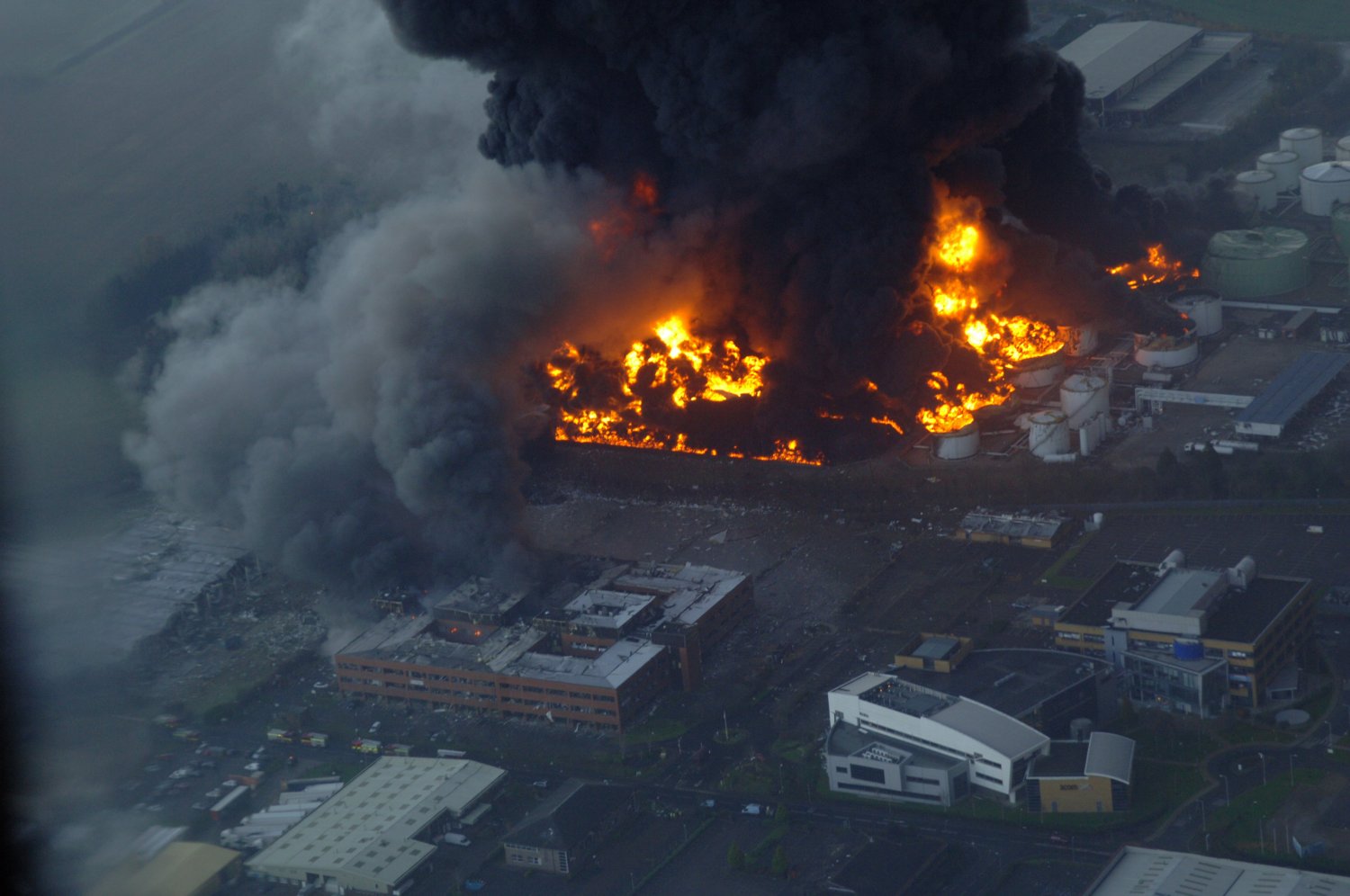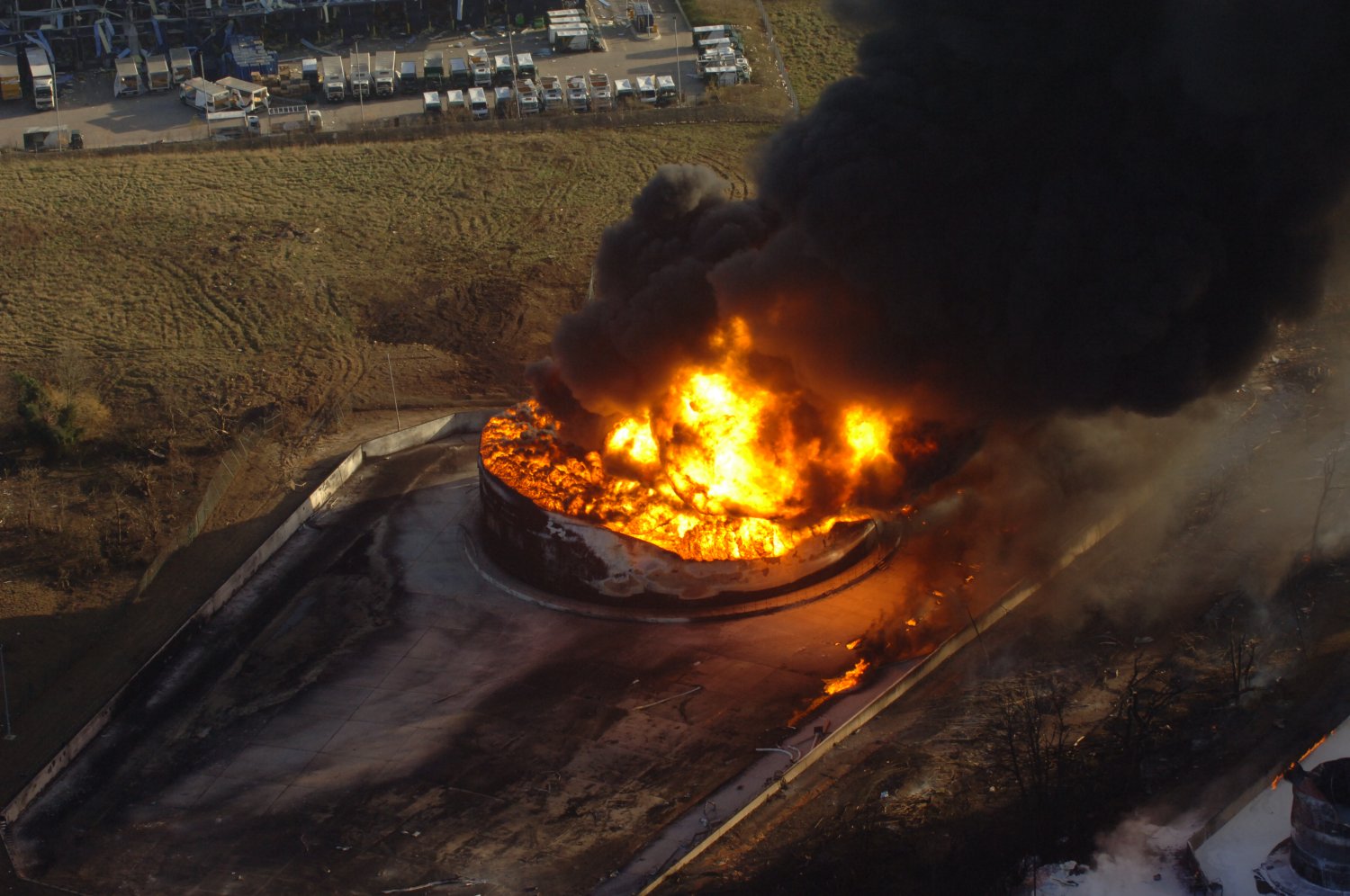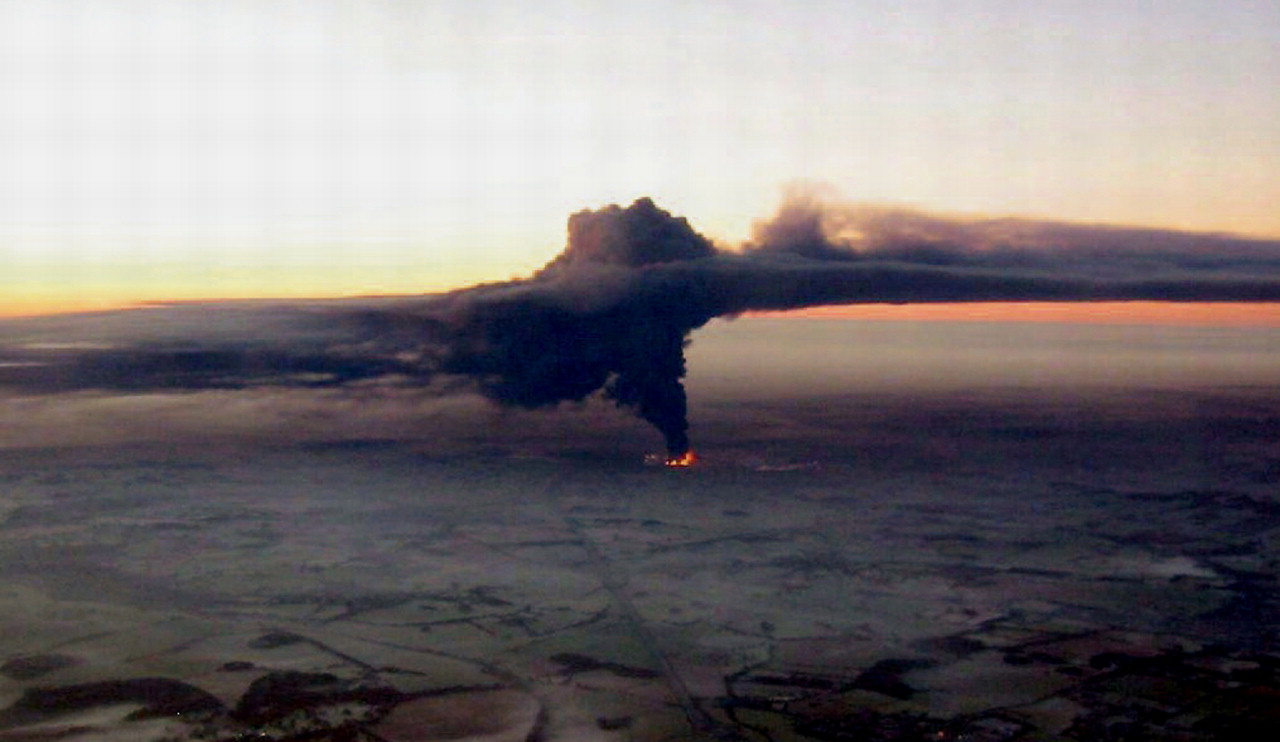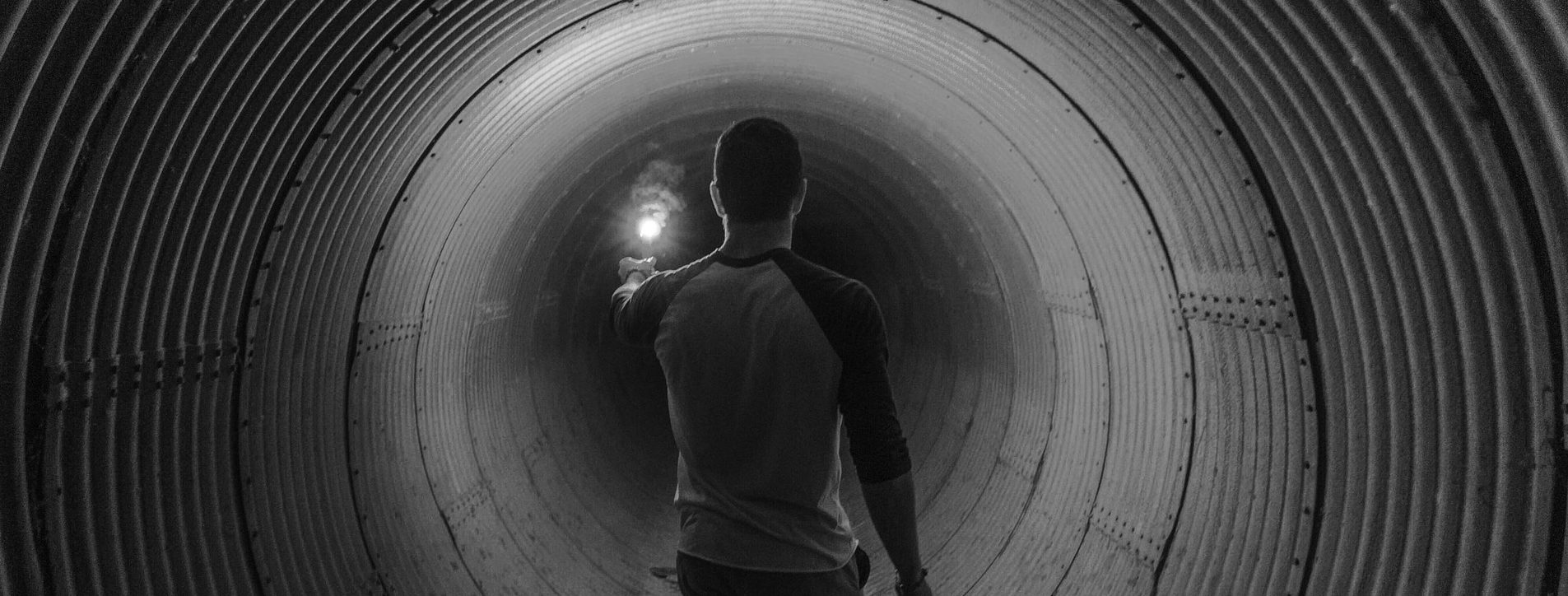The Buncefield Fuel Deposit, Hertfordshire, was one of Britain’s largest warehouses, known as the petroleum fuel tanker farm.
On the morning of December 11, 2005, a series of strong explosions followed by violent fire destroyed much of the warehouse and caused considerable material damage to neighborhoods.
The Buncefield warehouse stores fuel and other petroleum products before being transported to destinations like oil stations and airports. Buncefield was the fifth largest warehouse in the UK and had an important role in distributing the necessary fuels for London and South East England, including the busiest Heathrow airport in the UK.
On the morning of December 11, 2005, about 5:30 am began the supplying of unleaded petrol to one of the reservoirs.
The automatic shutdown of the fuel supply to prevent overfilling is provided with a safety system. In the case of Buncefield the safety system did not work. The fuel started to run beside the storage tank without stopping. The vapors formed from the fuel mix and atmospheric air moved westward to the central area of ??the warehouse.
After the explosion, a white fog was observed on the surveillance cameras – volatile light fractions resulting from the evaporation of the fuel.
Fuels do not combine easily. However, out of the 300 tons out of the deposit, about 10% turned into vapors by mixing with the cold air and reaching the level of concentration required for combustion (the mixture became flammable).
At 6:01 the first explosion took place. The subsequent fire covered more than 20 reservoirs in Buncefield Park. For five days the fire did not stop, destroying most of the park. Fire smoke could be seen from hundreds of miles away and spread over the south of England and beyond.
There were more than 1,000 firefighters involved in extinguishing the fire, backed by police forces across the UK. It took 32 hours to quench the main outbreak of the fire, and parts of the warehouse were still fumigating, two days after the explosion.
750,000 liters of foam and 55 million liters of water were used to extinguish the fire.
Approximately 200 people were evacuated during operations, and the surroundings and portions of the M1 highway were shut down.
In the case of Buncefield, it has ceded the safety system, but similar accidents can be caused by other factors, fuel storage and handling being high-ignition operations.
There are over 200 dangerous volatile pollutants to be controlled to prevent vapor emissions during power, storage, handling and processing operations.
Detailed information on the incident investigation can be found on the official Buncefield Investigation website.
Considered the biggest fire after World War II, the Buncefield incident is an example of the level of risks associated with fuel storage and handling, and the magnitude of the consequences in the event of an explosion.
Nitrogen inerting is a safe and effective method to keep fuel vapor (volatile volatile fractions) inside the tank, preventing it from reaching the atmosphere.
